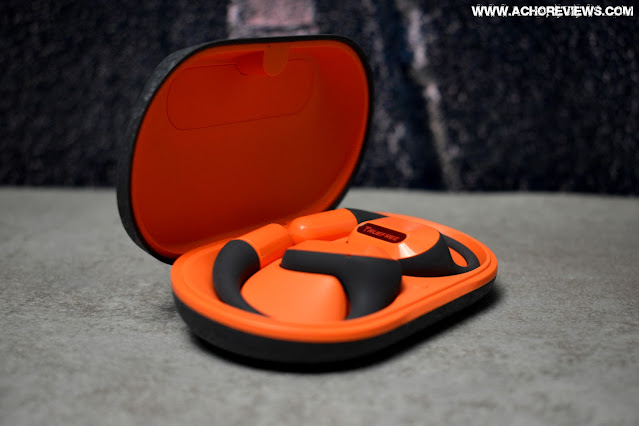Letshuoer S08
TLDR version on YouTube: TDLR - Letshuoer S08
The S08 have been sent to me directly by Letshuoer in exchange for the publication of my opinions in this review. Letshuoer have not made any requests or comments and I will do my best to be as unbiased as humanly possible in my review, as always.
The official page for the Letshuoer S08 can be found here: LETSHUOER S08 IEM 13mm Planar Magnetic Driver in Ear Monitor HiFi Earphone – letshuoer
As with all links that I share, the above is a non-affiliate link.
To avoid being repetitive in my reviews, you can find all the info about how I create the reviews, equipment used, how I receive the products and how to interpret my reviews by visiting: About my reviews
Intro…
Letshuoer have announced that, to celebrate their 8th anniversary, they will be releasing various new models and the S08 is the first of them.
This model is certainly not the first planar by Letshuoer, with the S12, S12 Pro, Z12 and S15 all being models that are well known in the IEM world. I personally have a soft spot for the S12, as it was the first planar magnetic IEM that I liked enough for it to become my daily driver for quite some time (between review and review that is) and the S15, while a completely different flavour of IEM, was also a set that I enjoyed.
In their pre-launch publicity of the S08, Letshuoer say that they are sure that the S08 will remind people of the other models in the S series of planar IEMs, although they have opted for a completely different shape and also a smaller driver in the form of a 13mm instead of the 14.8mm found on their other models.
While I know that there are already some reviews out there of this IEM, I have managed to not read them or pay much attention to comments, which is how I prefer to review things when possible. I will also say that I am putting together this review before the actual launch of the S08, although it may already be available when I actually publish it, so I can’t confirm the exact price at this moment but Letshuoer did mention it would be under $100, which is always a nice price point for planar IEMs (as long as they are good of course).
Presentation…
The last few products I have received from Letshuoer have all been excellent in the packaging and accessories department. While the S08 is a little more basic than things like the S15, it is still a nice experience and includes a decent amount of content.
The black outer box has a design on it in the form of an 8, with basic text on the front. On the back we get the basic specifications of the IEMs in 3 languages, along with a scratch sticker to prove the authenticity of the IEMs.
Sliding out an opening the inner box reveals the instruction manual and warranty card, underneath which we find the round screw top storage case, something we are used to receiving from Letshuoer lately, along with the IEMs sitting in sponge cutouts above it.
Inside the storage case, we find the cable, a replacement connector for the cable (more on that in a moment) and a disc storing 3 sets of “balanced” ear tips and 2x sets of “vocal” ear tips, plus another set of vocal tips that come installed on the IEMs.
In all it is nothing out of the ordinary but it is a nice set of accessories, all of decent quality, and I have no complaints at all under the 100€ mark.
Build and aesthetics…
As I mentioned in the intro, the S08 opts for a different shape to the previous S line up, with an oval shell that I find to be very comfortable and easy to obtain a seal, with the correct size tips of course. The faceplate has a 3D raised shape that resembles an 8, with Letshuoer engraved into one IEM and a logo into the other.
The shells are made from aluminium and are available in black or silver, with the black being the one I received. The aesthetics are discreet but elegant and, while I haven’t seen the silver model in person, I really like how the black version sits inside the ear without drawing attention to itself.
The included cable is also very nice at the price point that this IEMs sits at (if the sub $100 price is correct). It has interchangeable connections, which is not new for Letshuoer, but in this case there is a ring that screws on to the connector holding it in place. I like the design of the connector and, although I haven’t experienced any issues with the push on connectors in the past, it does add a bit more robustness to the connection. The cables itself is nothing really special, and it does have plastic connectors at the IEM end, but it is not overly thick or thin, and uses a four way braid that looks good in the dark brown colour it uses (at least for the black model).
Overall I am a fan of the aesthetics and the comfort of the S08, finding them to fit easily in my ears with a fit that is deep enough to use my usual size of tips but not be overly intrusive.
Sound…
All tracks mentioned are clickable links that allow you to open the reference track in the streaming service of your choice (YouTube, Tidal, Qobuz, Spotify, etc.)
Letshuoer teased in their publicity that this would remind people of other S series IEMs and it does, in some ways, but is its own thing in others.
As with many sets that we are seeing lately, at least the sets that seem to be coming across my desk, there is a tendency towards a more relaxed and laid back signature, without as much brightness in the upper end, which makes IEMs need more performance in the detail department to not fall behind the competition, due to the fact that they are not relying on those upper ranges to push forward that (sometimes false) sensation of detail.
This seems to be the aim with the S08, with a frequency response that does remind us of the S15 in some ways but not in others. Here is the graph of the S08 in comparison to my usual preference response:
And here it is in comparison to the S12 and the S15:
Now, moving on to my subjective opinions, which don’t always align with the graphs, I immediately see the resemblance in the lower notes to the S15 and the S12. We have that planar speed that keeps the lowest notes of “Chameleon” clean and clear, yet there isn’t a lot of rumble really. Not that there isn’t presence in the subbass, there is, it is just that, as it is fast and clean, it doesn’t seem to be as present as on other sets.
It is impressive how the S08 can keep up with “Chameleon” without feeling strained or about to lose control, yet it is also a little “polite” in the way it presents this track. The presentation of “No Sanctuary Here” fits the S08 better in my opinion, as it benefits from that slight “politeness” in the lower ranges, making for a track that is present yet not boomy at all.
With my midbass fatigue test, “Crazy” is a little too present in the midbass range but it is clean enough for that reverb to not become fatiguing. One thing I did notice with this song is that the upper mids, which we will talk about in just a moment, do affect her vocals in a negative way. There is a dip in the 3k range that sort of hollows out her voice in that range, putting emphasis on the frequencies just below and just above that range, making her come across a little fragile and also harsh in her upper vocal ranges.
Listening to “Tears In Heaven” I was very impressed by the separation and width to this track, with details being very apparent in the multiple instruments, yet I also got the sensation that the timbre and tonality of the same instruments were not quite correct, lacking a bit of body to them and having an overly emphasized upper range. Much the same as with the vocals in “Crazy”, this lends to a slightly fragile sound.
I do find that the slight dip in the upper minds can affect some tracks much more than others. For example, “Long After You’re Gone” is another guitar plus vocals track and the fragility That I noticed with “Tears In Heaven” is not present, with the track seeming to have plenty of body and a nice fullness to both guitar and vocals.
Listening to “Billie Jean” by The Civil Wars, I once again get that sensation that something is not quite correct with the guitar and male vocal, even seeming a little nasal on occasions, yet the female vocals sound full and present, whereas with other female vocals, I can get that thinness again and slight harshness.
It is not really an issue with sibilance, at least not with the usual culprits such as “Code Cool”, it is more something that appears just when certain vocals or instruments that have a certain presence in that area coincide with the dip and it leaves things a little harsh and thin.
I will say that I am impressed with the detail and the space that these IEMs offer, with good separation both left to right and front to back. There is a wonderful sensation of space between the separate layers of “Strange Fruit” and the location of instruments in “La Luna” is very good.
Treble extension is not the best and can lead to a little sensation of dullness on certain tracks, depending on what the style of recording is. For example, it is much more noticeable with certain instruments such as acoustic guitars and pianos but is not really noticeable with more electronically focused music.
Conclusion…
The Letshuoer S08 is a set of IEMs that leaves me a little confused. With certain tracks they can come across as a little dull, with others, there is no sign of that dullness at all. Certain acoustic tracks seem to have good tonality and timbre to the guitars, whereas others seem to come across as a little fragile and harsh. The same happens to vocals, where a certain female vocal can be fragile and a little spicy, yet another, even in a similar range, has more body and presence.
One thing that I can’t deny is that these IEMs perform well. The planar drivers do what they are good at, they provide speed and detail. They are not the most detailed of IEMs out there but they are still good and will still present the details in a way that is enjoyable. The bass is very well controlled and defined, seemingly coping with even difficult tracks easily.
So it is just the tuning that leaves me a little confused. Now, I don’t speak about EQ in my reviews, at least not usually, because I like to judge things in their stock form, but personally, I think that the S08 are a very good candidate for some EQ tweaking. They perform well and just some slight reshaping of the upper mids makes them come alive and sound much more natural to my ears.
I think that is an important note here, you have a sub $100 set of IEMs that is well built, comfortable (to my ears), looks good (to my eyes) and performs well, so even if you find you are not fond of the stock tuning, a touch of EQ will soon turn it into a very enjoyable IEM.
As always, this review is available in Spanish, both on my blog (www.achoreviews.com) and on YouTube (www.youtube.com/achoreviews)
All FR measurements of IEMs can be viewed and compared on achoreviews.squig.link
All isolation measurements of IEMs can be found on achoreviews.squig.link/isolation





.png)
.png)





.png)








.png)






.png)






.png)






.png)













.png)
.png)
.png)
.png)






.png)





.png)






.png)






.png)
